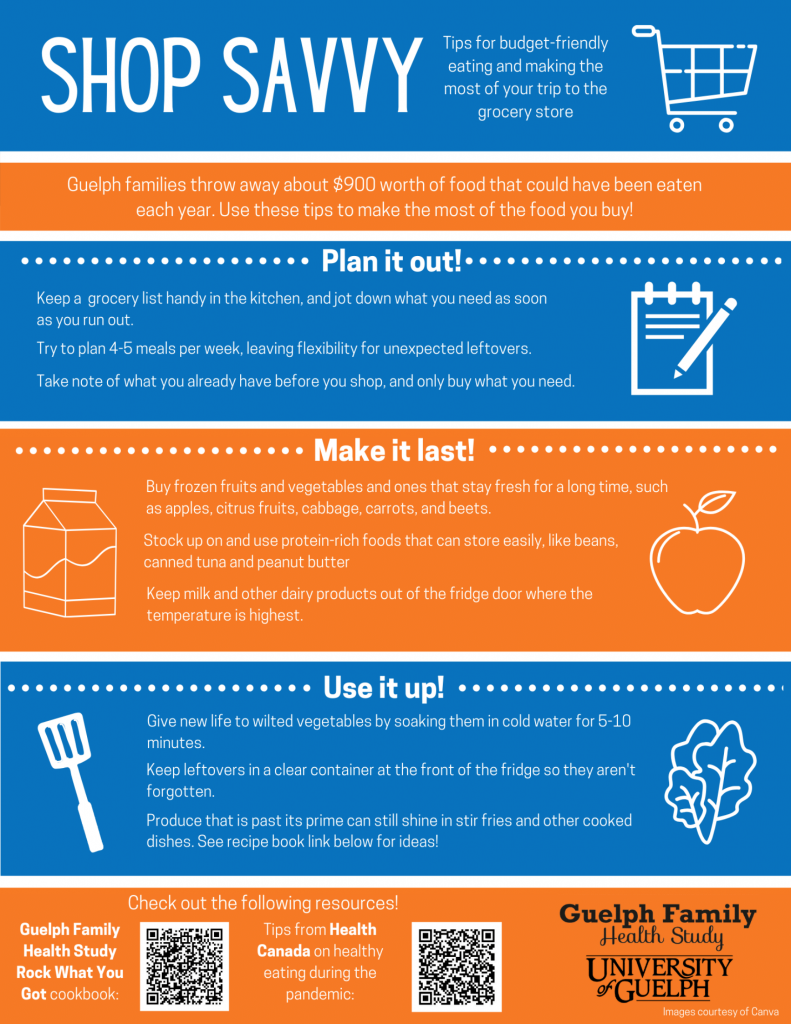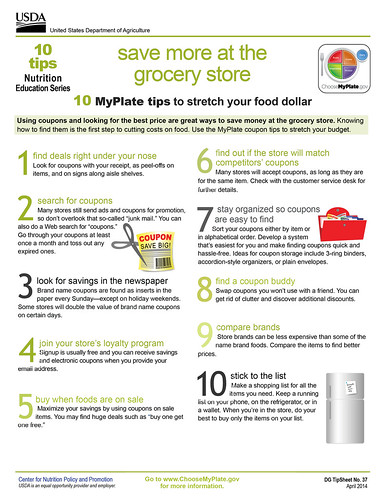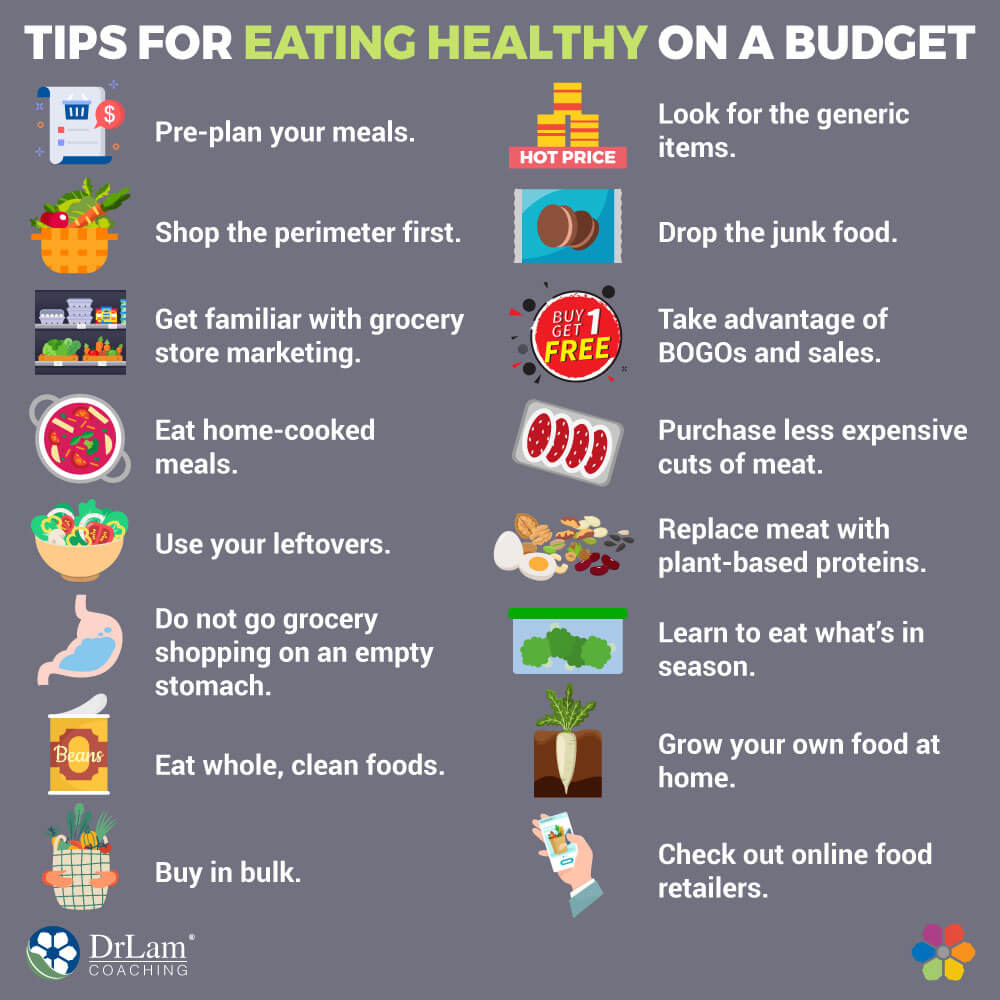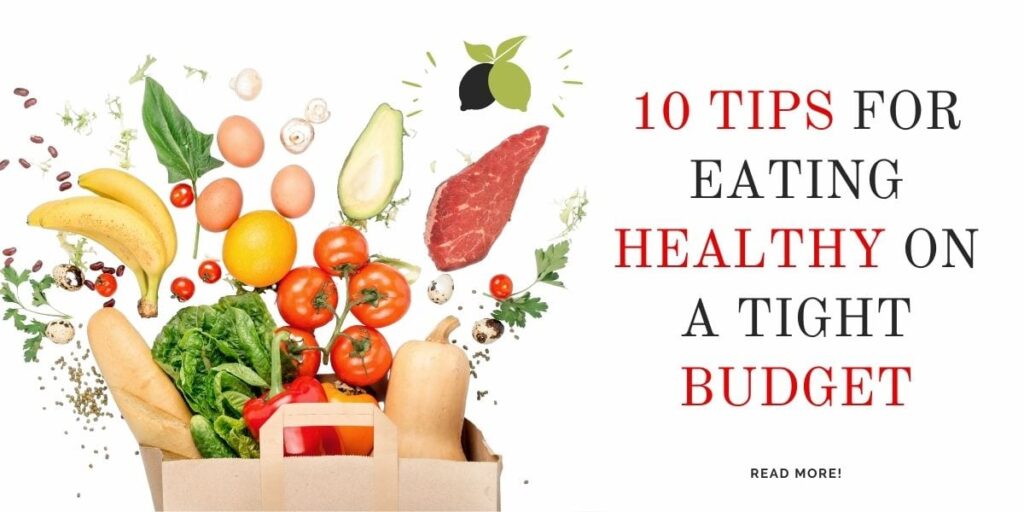Looking for ways to eat healthy without breaking the bank? Look no further! In this article, I will share with you ten simple and practical tips for maintaining a nutritious diet while sticking to a budget. From meal planning and grocery shopping strategies to smart ingredient substitutions, these tips will help you make healthier choices without emptying your wallet. So get ready to discover how you can take care of your health without compromising your finances!

Plan Your Meals
Create a Weekly Meal Plan
Planning your meals can save you time, money, and stress. By creating a weekly meal plan, you can ensure that you have all the ingredients you need and can avoid the temptation of eating out. Start by identifying recipes that you want to try or dishes that you enjoy and want to repeat. Consider your schedule for the week and choose meals that are quick and easy to prepare on busy days. Write down your plan and display it in a visible place, such as on the fridge, to help you stay organized and accountable.
Make a Grocery List
Once you have your meal plan, it’s time to make a grocery list. Take a look at each recipe and note down all the ingredients you will need. Check your pantry to see what you already have on hand, as it can help you avoid buying duplicates. Organize your list based on the layout of your grocery store to make your shopping experience faster and more efficient. Stick to your list and avoid impulse purchases to stay within your budget.
Shop for Sales and Discounts
To save money on groceries, keep an eye out for sales and discounts. Many grocery stores have weekly specials or offer loyalty programs that can help you save on your purchases. Plan your meals around what is on sale and consider stocking up on non-perishable items when they are on promotion. Additionally, be open to trying different brands or store brands, as they can often be cheaper than name brands without compromising on quality.
Cook at Home
Avoid Eating Out
Eating out can quickly become a drain on your budget. Instead, try to cook at home as much as possible. Not only will it save you money, but it will also allow you to have full control over the ingredients and portion sizes of your meals. If you find it challenging to cook every day, consider setting aside a specific day or two for meal preparation. This way, you can cook multiple meals in advance and have them readily available throughout the week.
Master Simple and Healthy Recipes
You don’t have to be a professional chef to cook delicious and healthy meals at home. Focus on mastering a few simple recipes that you enjoy and that fit within your budget. Look for recipes that require affordable ingredients and minimal preparation time. Experiment with different seasonings and spices to add flavor without breaking the bank. With practice, you’ll become more confident in your cooking skills and be able to create nutritious meals without relying on expensive processed foods.
Meal Prep for the Week
Meal prepping is a game-changer when it comes to saving time and money. Set aside some time during the week to prepare your meals in advance. Chop vegetables, marinate proteins, and cook whole grains in bulk to have the building blocks for quick and easy meals. Portion your meals into individual containers and refrigerate or freeze them for later use. This way, you’ll have healthy meals readily available and won’t be tempted to order takeout or eat unhealthy convenience foods.

Buy in Bulk
Purchase Staple Foods in Bulk
One of the most effective ways to save money on groceries is to buy staple foods in bulk. Items like rice, pasta, beans, and oats are often cheaper when purchased in larger quantities. Not only will buying in bulk save you money in the long run, but it will also reduce packaging waste. Invest in airtight containers to store your bulk purchases and keep them fresh for longer periods. Remember to check the unit price to ensure that buying in bulk is indeed more cost-effective.
Consider Splitting Bulk Purchases with Friends or Family
If buying in bulk seems overwhelming or you’re concerned about consuming large quantities of food, consider sharing the cost and products with friends or family members. Splitting bulk purchases allows everyone to enjoy the benefits of discounted prices without the worry of excess. Coordinate with others to decide on the items you want to purchase together, and divide them accordingly. This way, you can still enjoy the savings without the need for excessive storage.
Look for Bulk Discounts
Aside from regular bulk purchases, keep an eye out for specific bulk discounts and promotions. Some stores offer discounted prices on bulk items during certain times of the year or have loyalty programs that provide additional savings on larger purchases. Take advantage of these opportunities to stock up on items that you regularly use, such as canned goods or pantry staples. Just be sure that you will be able to consume them before they expire to avoid waste.
Choose Whole Foods
Opt for Whole Grains
When it comes to grains, opt for whole grains instead of refined ones. Whole grains are not only healthier but also more cost-effective in the long run. They contain more fiber, vitamins, and minerals than their refined counterparts. Whole grains, such as brown rice, quinoa, and whole wheat pasta, can fill you up and keep you satisfied for longer periods. Incorporate them into your meals as a base or side dish to add nutritional value without adding significant expense.
Include a Variety of Fruits and Vegetables
Fruits and vegetables are essential components of a healthy diet, and luckily, they can be affordable if you shop wisely. Include a variety of fresh, frozen, or canned fruits and vegetables in your meals to ensure you’re getting a good mix of nutrients. Buying produce that is in season is usually cheaper and more flavorful. Consider purchasing frozen fruits and vegetables when fresh options are limited or expensive. They are just as nutritious and can be stored for longer periods.
Avoid Processed Foods
Processed foods, such as packaged snacks, sugary cereals, and frozen meals, tend to be more expensive than whole foods and often contain added sugars, unhealthy fats, and preservatives. Avoiding these items not only promotes better health but also helps you save money. Instead of relying on pre-packaged convenience foods, opt for homemade alternatives. For example, instead of buying pre-cut and packaged fruits, buy whole fruits and slice them yourself. Not only will you save money, but you’ll also have fresher produce.

Don’t Waste Food
Store Food Properly
Proper food storage can help extend the lifespan of your groceries and reduce waste. Store perishable items, such as meats and dairy products, in the refrigerator at the recommended temperatures. Use airtight containers or food storage bags to keep your fruits, vegetables, and leftovers fresh. Labeling leftovers with dates can help you keep track of what needs to be eaten first. By storing your food properly, you’ll prevent spoilage and unnecessary waste, which can ultimately save you money.
Use Leftovers for New Meals
Leftovers are a great way to stretch your budget and prevent food waste. Instead of tossing out unused portions, get creative and transform them into new meals. Use leftover roasted chicken to make a flavorful stir-fry or repurpose cooked vegetables into a delicious frittata. Mixing and matching ingredients can lead to exciting flavor combinations and reduce the need to buy additional groceries. Not only will you save money, but you’ll also enjoy the satisfaction of creating something new and delicious.
Have a ‘Clean Out the Pantry’ Night
Designate a night each week as a “clean out the pantry” night. This is an opportunity to use up any remaining ingredients or canned goods that may be nearing their expiration date. Get creative and challenge yourself to come up with a meal using only ingredients you already have on hand. Not only does this help reduce food waste, but it also allows you to save money by avoiding unnecessary trips to the grocery store. Who knows, you might even discover a new favorite dish!
Shop Seasonally and Locally
Buy Produce in Season
When it comes to buying fruits and vegetables, choosing seasonal options can be more affordable and flavorful. Seasonal produce is often in abundance, leading to lower prices due to the increased supply. Visit your local grocery store or farmers market to see what fruits and vegetables are in season. Not only will you save money, but you’ll also support local farmers and enjoy produce at its peak freshness. Seasonal eating can bring variety to your meals and allow you to explore new flavors throughout the year.
Support Local Farmers
Buying local not only supports your community but can also be a cost-effective way to obtain fresh and high-quality ingredients. Visit farmers markets or join a community-supported agriculture (CSA) program to access locally grown produce, dairy products, and meats. Local farmers often use sustainable farming methods that prioritize the health of the environment and animals. By purchasing directly from them, you can get to know the people behind your food and contribute to a more sustainable food system.
Visit Farmers Markets
Farmers markets offer a unique shopping experience where you can connect directly with local farmers and artisans. Not only do they often have a wide variety of fresh produce, but they may also offer homemade goods, such as jams, bread, and honey. Take advantage of the opportunity to ask questions about the products and support local businesses. In addition to the affordable options, farmers markets are a great way to immerse yourself in the community and foster a sense of connection to your food.

Utilize Frozen and Canned Foods
Stock Up on Frozen Fruits and Vegetables
Frozen fruits and vegetables are just as nutritious as fresh ones and can be more budget-friendly. They are typically picked at their peak ripeness and frozen immediately, preserving their nutritional value. Stock up on bags of frozen fruits and vegetables to have on hand when fresh options are limited or expensive. You can easily toss them into smoothies, stir-fries, or soups for a convenient and healthy addition to your meals.
Buy Canned Beans and Legumes
Canned beans and legumes are affordable, versatile, and packed with nutrients. They are a great source of protein and fiber, making them an excellent addition to vegetarian or budget-friendly meals. Rinse canned beans before using them to reduce sodium content, or opt for low-sodium options when available. Incorporate beans and legumes into your meals by adding them to salads, soups, or as a base for delicious homemade hummus.
Check Labels for No Added Sugar or Salt
When purchasing frozen or canned foods, be sure to check the labels for any added sugars or salts. Some products may have unnecessary additives that can compromise the nutritional value. Look for options labeled as “no added sugar” or “no added salt” to ensure you’re making the healthiest choices within your budget. By being mindful of these labels, you can make informed decisions and prioritize your health while still saving money.
Eat Less Meat
Choose Cheaper Protein Sources
Meat can be one of the more expensive items in your grocery budget, so opting for cheaper protein sources can help you save money. Consider incorporating plant-based protein sources such as beans, lentils, tofu, or tempeh into your meals. These options are often more affordable and can be just as satisfying and nutritious as meat. Experiment with new recipes and flavors to make your plant-based meals exciting and enjoyable.
Try Meatless Meals
Cutting back on meat and incorporating more meatless meals into your diet is not only economical but also has positive health and environmental benefits. Challenge yourself to have at least one or two meatless meals per week. Explore vegetarian or vegan recipes that are both delicious and satisfying. Plant-based meals can provide a wide range of nutrients and flavors and are often more economical than meat-based dishes.
Use Meat as a Flavoring Agent
Another way to reduce your meat consumption and save money is to use meat as a flavoring agent rather than the main ingredient. In dishes such as stir-fries, soups, or pasta sauces, a small amount of meat can provide a punch of flavor without being the main focus. By using meat sparingly, you can still enjoy its taste while stretching your budget and incorporating more plant-based ingredients into your meals.

Drink Water
Ditch Expensive Beverages
Drinking water is not only essential for your health but also budget-friendly. Avoid purchasing expensive beverages such as soda, energy drinks, or specialty coffee, as these can quickly add up in terms of cost. Instead, make water your default beverage of choice. It is refreshing, hydrating, and virtually free. If you’re looking for variation, add a slice of lemon, lime, or cucumber to your water for a burst of flavor without the added cost.
Invest in a Reusable Water Bottle
Investing in a reusable water bottle is not only environmentally friendly but also encourages you to drink more water throughout the day. Avoid purchasing single-use plastic bottles, as they can be costly and contribute to unnecessary waste. Fill up your reusable water bottle before you leave the house, and always have it with you as a reminder to stay hydrated. It’s a small investment that can lead to substantial savings over time.
Add Flavor to Water with Citrus or Fruit
If you find plain water boring, try adding some natural flavors without the added sugars or cost. Squeeze a slice of lemon, lime, or orange into your water to infuse it with a refreshing taste. You can also add slices of fresh fruit, such as strawberries, cucumbers, or mint, for a hint of natural sweetness. Experiment with different combinations to find your favorite flavors. By making your own flavored water, you can enjoy a refreshing beverage without breaking the bank.
Grow Your Own Food
Start a Vegetable Garden
Growing your own vegetables is a rewarding way to save money and enjoy the freshness of homegrown produce. Even with limited space, you can start a small vegetable garden in your backyard or even on your balcony. Choose easy-to-grow vegetables such as lettuce, herbs, or tomatoes to begin with. Not only will you have access to affordable organic produce, but gardening can also be a therapeutic and enjoyable activity that brings you closer to nature.
Grow Herbs in Small Pots
Herbs are one of the easiest things to grow and can add flavor and freshness to your meals. Even if you don’t have much space, you can grow herbs in small pots placed on a windowsill or balcony. Basil, thyme, rosemary, and mint are just a few examples of herbs that are simple to grow and can enhance the taste of your dishes. Snip off what you need when cooking, and the plants will continue to grow, providing you with a constant supply.
Utilize Indoor Gardening Techniques
If outdoor space is limited or not available, consider utilizing indoor gardening techniques to grow your own food. Explore options such as hydroponics or indoor herb gardens that require minimal space but offer the advantage of growing fresh produce year-round. These techniques often use less soil and water while maximizing growth potential. By growing your own food indoors, you can have a continuous supply of fresh ingredients and save money on grocery bills.
In conclusion, healthy eating on a budget is not only possible but also enjoyable. By following these tips, you can plan your meals, cook at home, buy in bulk, choose whole foods, minimize food waste, shop seasonally and locally, utilize frozen and canned foods, eat less meat, drink water, and even grow your own food. With a little planning, creativity, and resourcefulness, you can nourish your body while being mindful of your budget. Remember, healthy eating doesn’t have to be expensive – it can be both delicious and affordable!


